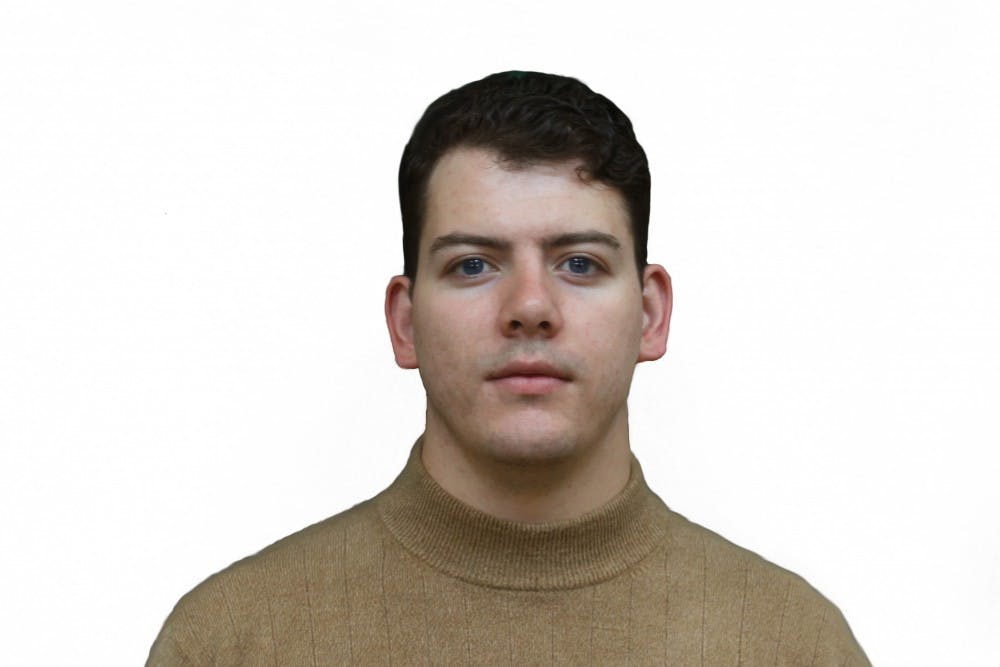The trail began at the grounds of the Mesa Laboratory of the National Center for Atmospheric Research, a pink concrete building perched on the slopes of Green Mountain, near Boulder, Colorado. Designed by I. M. Pei (a one-time Penn student and architect of the Louvre Pyramid in Paris) the laboratory’s turrets and windows match the the Flatirons behind it — rare, naked pink rock formations that bolt towards the sky from the hills.
It was from this location that, last Monday, my sister and I headed west through a forested trail in search of Mallory Cave.
Two weeks ago I wrote about how we shape, and are shaped by, the physical world that surrounds us. After my hike on Green Mountain, however, I realized that I had left something out. To notice that we are not much different from our surroundings is only the first part of the story, what comes next is to find how we can better fit within this nature, while accepting our responsibility for the damage we have already inflicted against it.
For a while before the hike, I had been reading the philosophy of Robert Nozick, which I found helpful for exploring these ideas. In his book, “Love’s Bond,” Nozick argues that the boundaries that define our sense of self are always drawn in light of what we own — our perception of the world, our personal memories, our current spatial location all separate us as individuals. But Nozick admits that there are times when these boundaries lose definition.
The places, experiences, conversations and problems that we share with each other don’t have a special relationship to any one of us alone. Instead, in having these things together, our selves and the selves of others overlap, and the boundaries between us become less defined.
As we hiked up the mountain, I wondered whether I could think of the forest around us as a thing in this sense — not only as a part of my individual experience, but one which I shared with my sister and dozens of other hikers on that summer morning. Whether I noticed it or not, I was joining everyone else in having the forest, making it a part of myself, and in so doing gaining a responsibility for it not unlike that which I have for my own body.
That our sense of identity can stretch beyond us to include other places and other people is a strange and beautiful idea, but one that is also reflected in nature. Halfway through our journey, the trail cut across another wooded area on the slopes of the mountain. Seemingly composed of hundreds of separate trees, this forest was actually the clonal colony of a single quaking aspen, which, in the fall, would turn yellow with the other aspens — in contrast to the surrounding pines — a single, living body connected by a vast underground root system.
We stopped to rest there, sitting on a mossy trunk overlooking the foothills. The beige walls of the Mesa Laboratory could be seen through pockets of space between the trees, looking as natural as the bedrock. This was not unintentional — achieving this harmony was a crucial part of I. M. Pei’s vision.
“By taking the position of being different from nature, you are less likely to be compared to nature,” he once said in an interview, “you are saying that we’re different. That we’re man made.”
“But that is not what you wanted to do?” The interviewer asked.
“I didn’t think so, I didn’t think I could reach a spiritual dimension by taking that approach.”
It’s evident that Pei, who celebrated his 100th birthday earlier this year, was able to alter the world in a responsible, conscious and artful manner.
However, it will always be easier for us to avoid being compared to nature, to think that we are not accountable for the way we mark our surroundings — how our lives compare, and fit within, the world that was there before we arrived. The consequences of living this way have come at a cost: Now, even when absorbed by the natural world, it’s hard not to come across the damage we have caused.
At the endpoint of the trail, we found the entrance to Mallory Cave boxed by a wrought-iron cage. The gate, complete with the likeness of bats straddling the metal bars, had been built to protect the animals inside from the human spread of White Nose Syndrome. Since it had been discovered in a single New York cave in 2006, the disease had killed nearly six million bats in North America.
“The afflicted animals are often seen flying outside their caves in the winter,” a sign nearby explained, “waking up prematurely from hibernation, and dying, shortly after, from cold or starvation.”
JUAN SEBASTIÁN PINTO is a College senior from Quito, Ecuador studying English.
The Daily Pennsylvanian is an independent, student-run newspaper. Please consider making a donation to support the coverage that shapes the University. Your generosity ensures a future of strong journalism at Penn.
Donate





